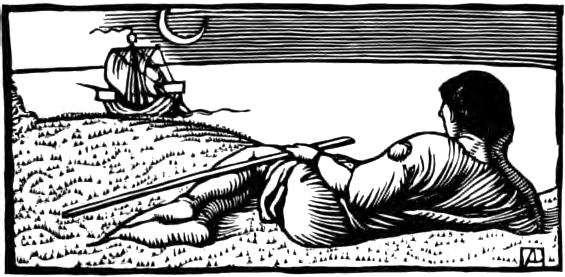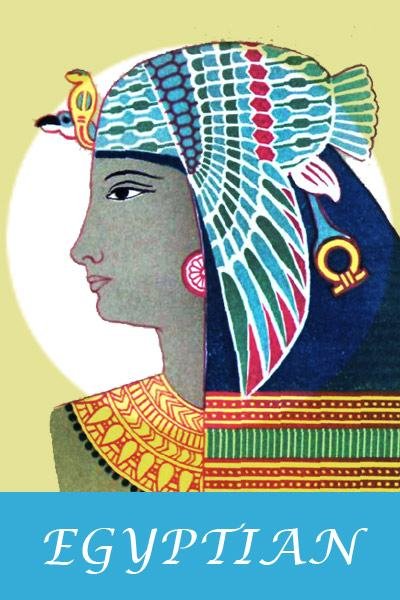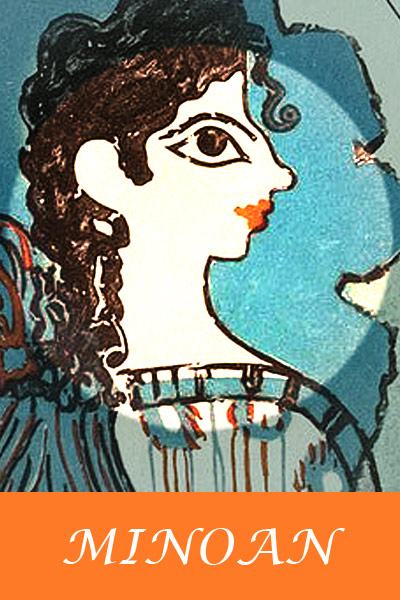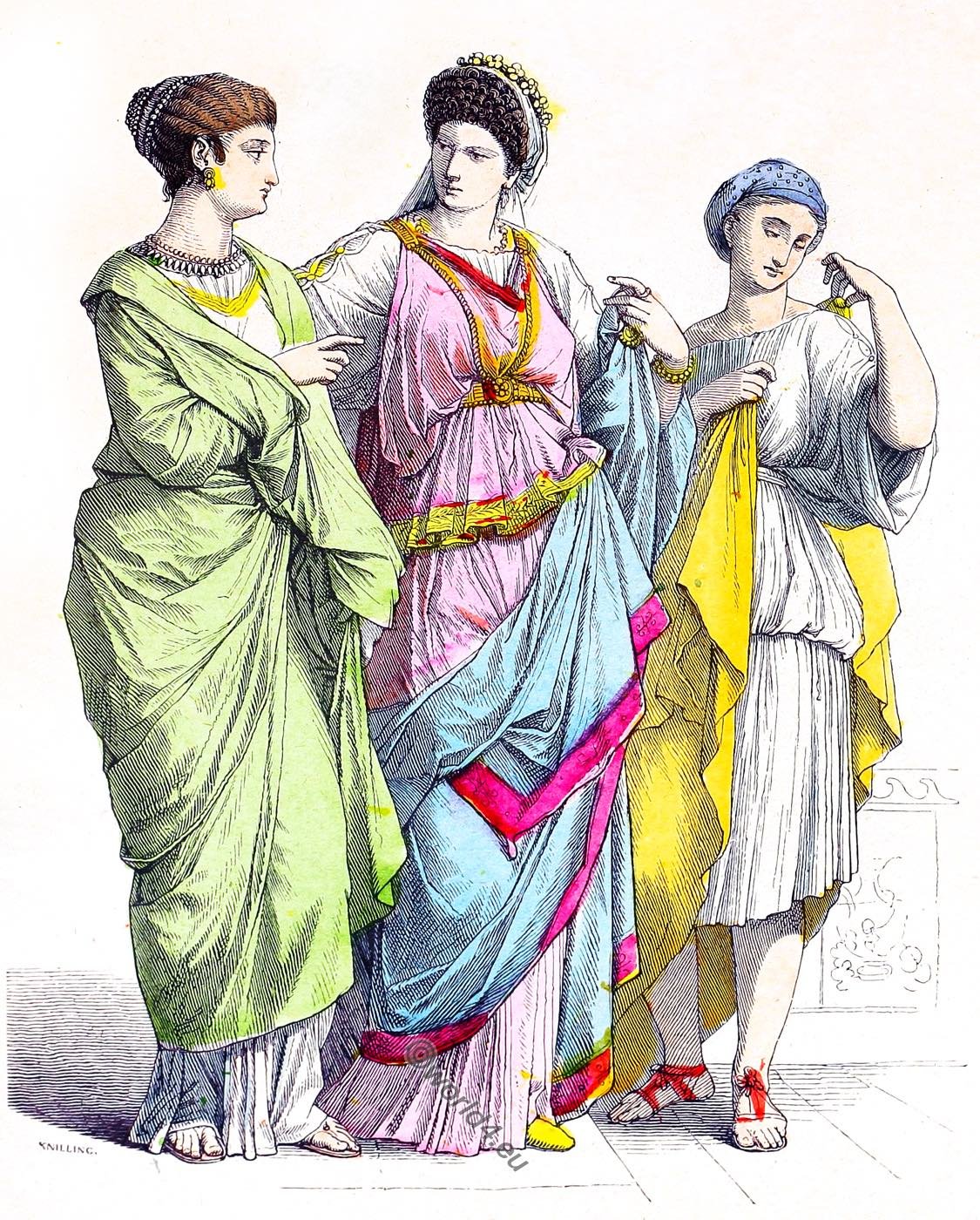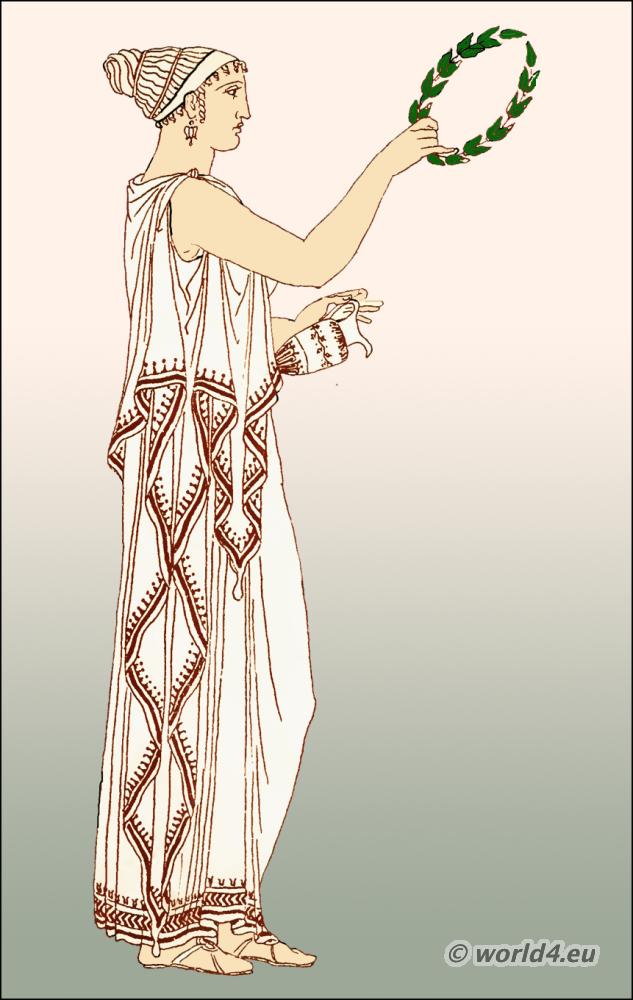The culture of the Greeks in antiquity.
Introduction
THE GREEK COSTUME.
The Greek Costume remains about the most artistic dress in history. It was simple in lines, but the elegance of its draperies cannot be surpassed even today.
In their costume, as in their decoration, the people of ancient Greece achieved the maximum of symmetry and proportion. They considered the care of their bodies the main preparation for dress. Hygiene being an important factor in their lives, after a daily bath the women of Greece, and also the men, used fragrant oils and other perfumes profusely.
Their garments, which were based on the circle and the rectangle, were gracefully draped around their perfectly developed figures with thoughtful consideration. The materials usually woven by the women were mostly wool and flaxen stuff dyed various colors.
Jewelry, worn with considerable limitation, consisted of bracelets, pins, necklaces, and mitre for the hair. The headdress was a sort of cap held with a band. Their long braided hair fell in the back.
Content:
- Dress of women and men. Various garments. Chlamys, Petasos, Himation, the Chiton.
- The Strophion, make-up, color and ornament. Table manners, meals, banquet, table equipment.
- Headgear, hairstyles. Musical instruments. The Military. Types of chariots and armor, weapons, tribes, helmets.
Following: contributions by various authors on ancient Greece, costume history, archaeology, decoration, ornament, crafts, customs, military, travel, grand tour, osman, etc.
Continuing
